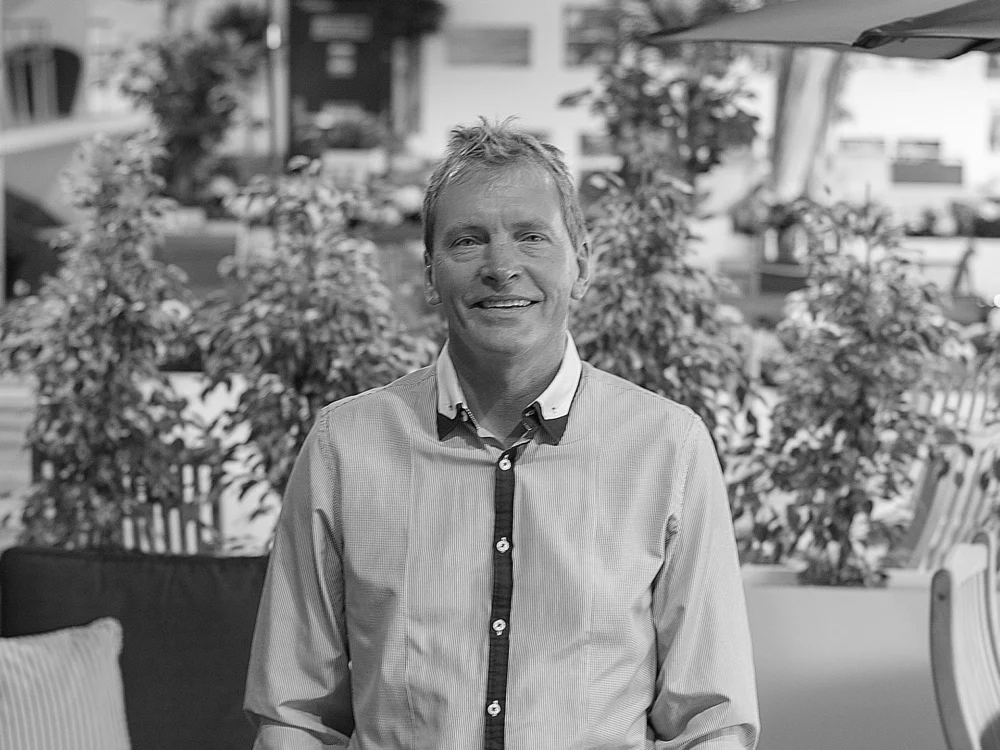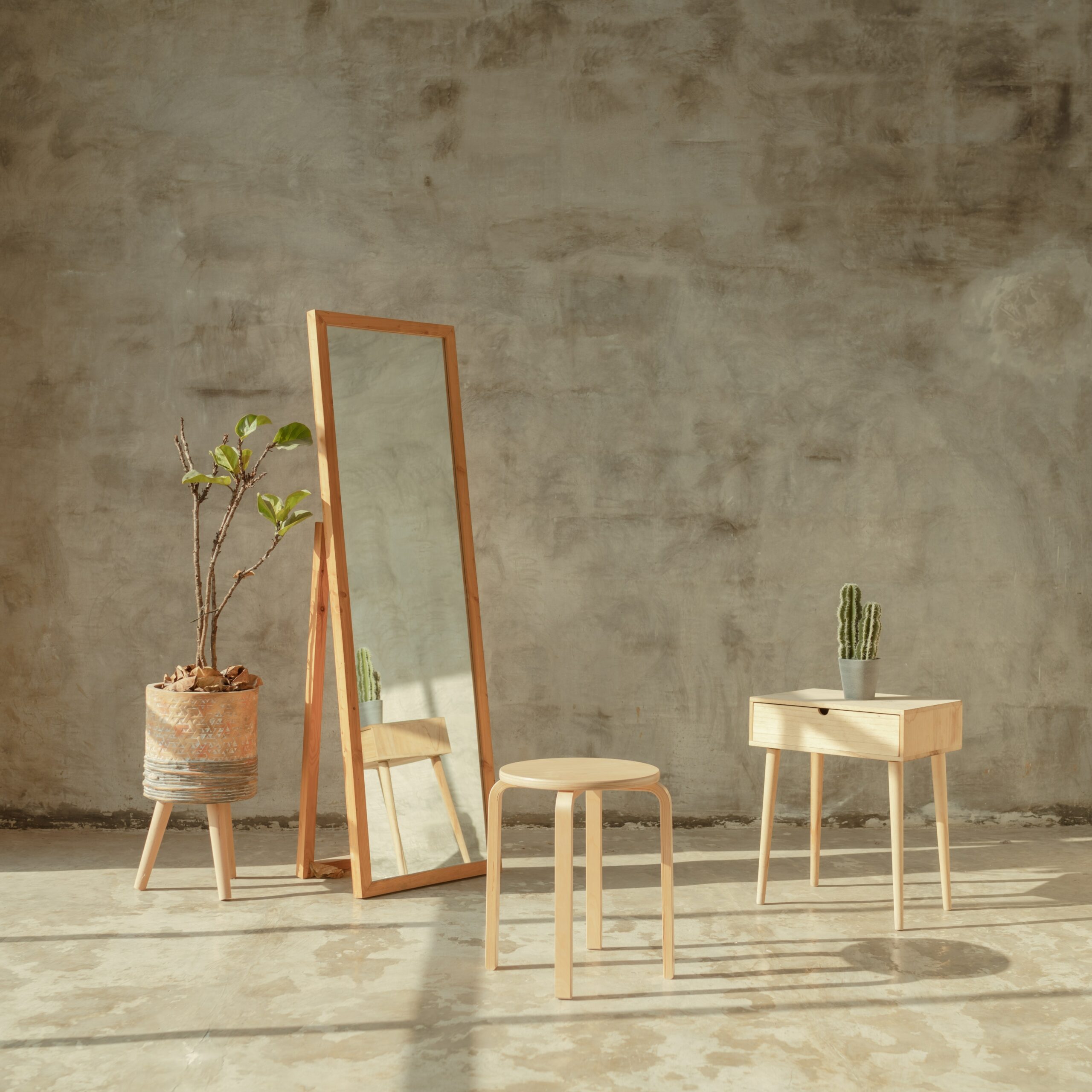With back-to-back launches of new ‘Scandi’ inspired ranges (Trak and Dana) by Alexander Rose, it seems a great time to talk about the influences that Scandinavia has had on the furniture industry and design in general. Even if you have even the vaguest interest in furniture design you will know that Scandinavia has had a huge and enduring impact on the industry. This article will take you through a brief history of the design style and how it has impacted Alexander Rose’s design language.
Scandinavia is made up of the ‘Nordic’ nations of Sweden, Norway, Finland, and Denmark. Scandinavian design can be recognised by its clean lines, often muted colours and use of natural woods. Historically and up to present day, Scandinavian designers feel it is important to use materials that can be sourced locally. This means you can spot Nordic design by looking for materials such as Oak, Ash, Leather and Wool. Colour pallet is another tell tell sign that you have something Scandinavian; often tones of browns and greys are balanced to give a neutral and clean appearance. When you enter a space that has Scandinavian influences you will find calmness due to the minimalist approach.
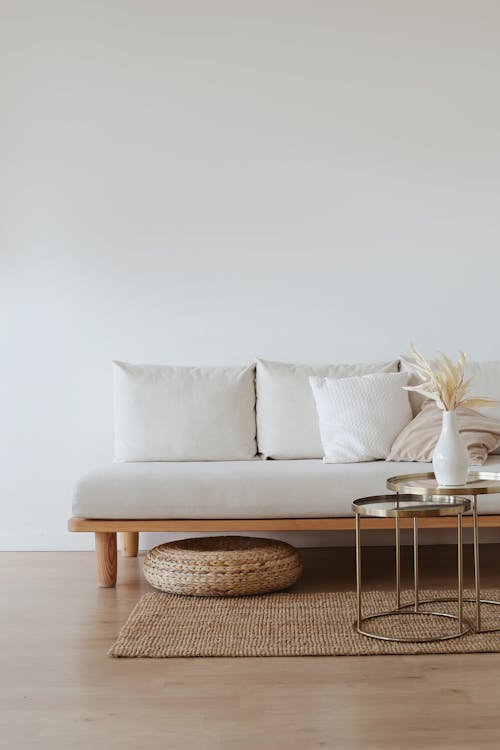
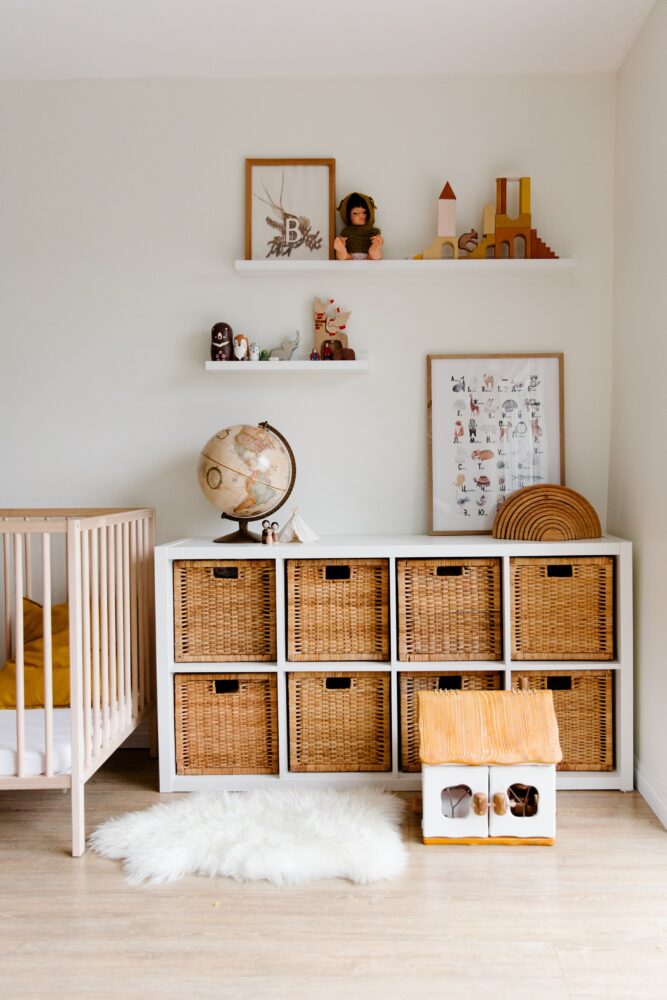
In the early 20th century, the industrial revolution and the Bauhaus movement pushed European design away from ornamentally decorated furniture. The move was towards a rational, functional design aesthetic that took a form follows function, less is more approach which is still practised widely to this day. Famous furniture designed during this movement includes the renowned Eames and Barcelona chairs.
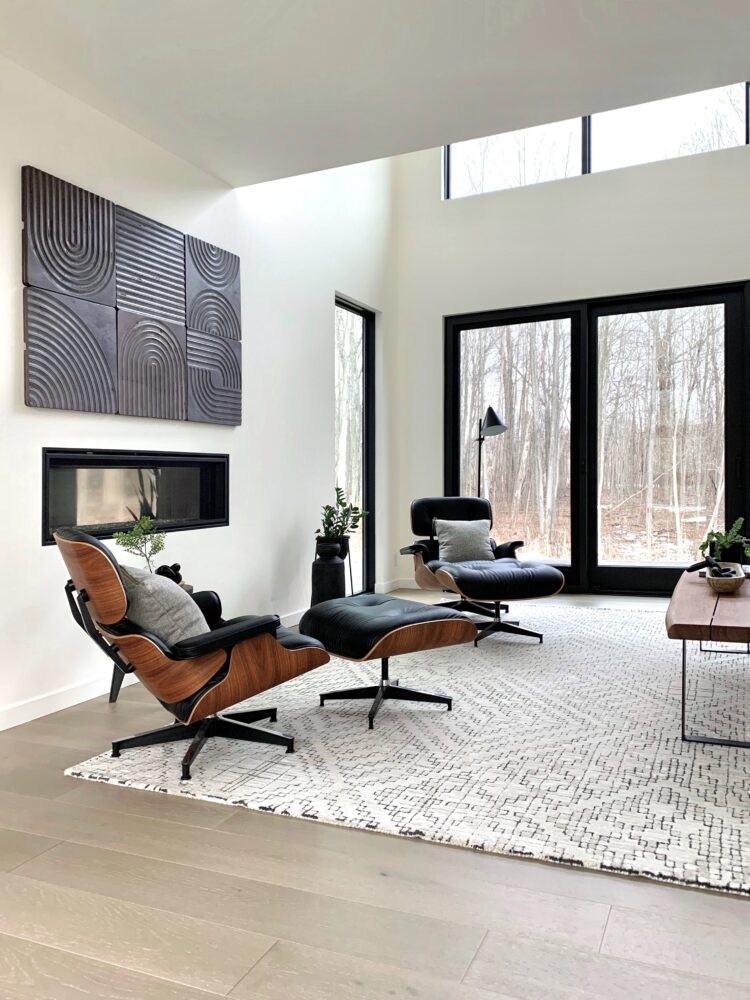

Scandinavian designers took the core philosophy of Bauhaus and put their spin on it. Functionality and simplicity were key, combining these with long-standing traditional manufacturing methods to create organic shapes. In the mid-1930s a pioneering designer from Finland named Alvar Alto introduced the technique of bending plywood to furniture manufacture. This revolutionised the use of timber in furniture production. One of Alto’s most famous creations was the Stool 60 which is now over 80 years old and still in manufacture. One of the most popular chairs produced by Scandinavian furniture giants IKEA is the Poäng Chair. The application of bent plywood for furniture means that curved timber furniture can now be made without using the wasteful process of carving and shaping. The second benefit is that you can create the same shape over and over again, which even the most skillful cabinet makers could never do. Finally due to the structure of plywood you can create timber products with far greater flexibility without sacrificing on strength.
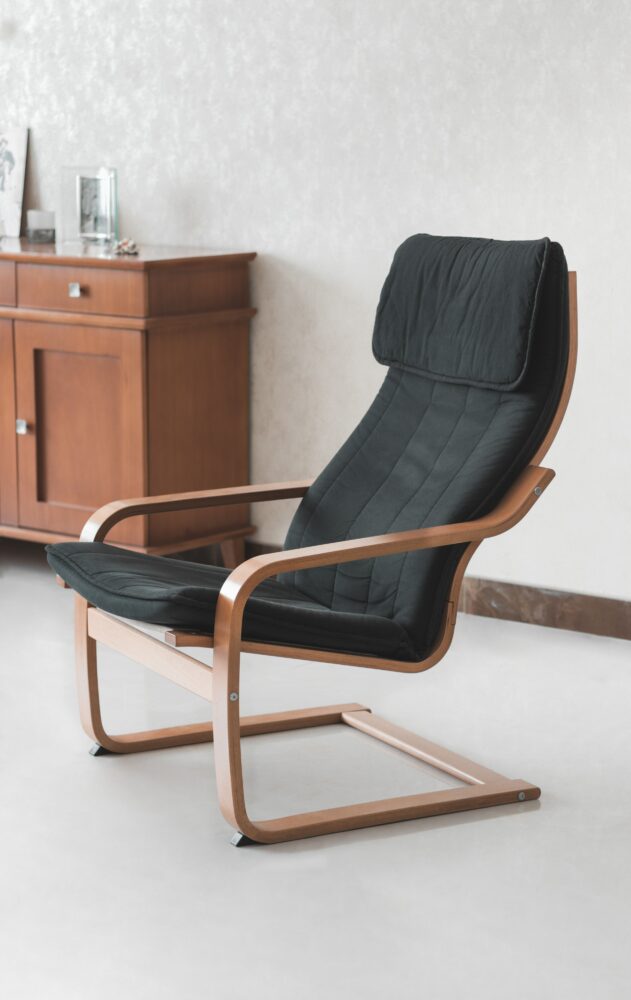
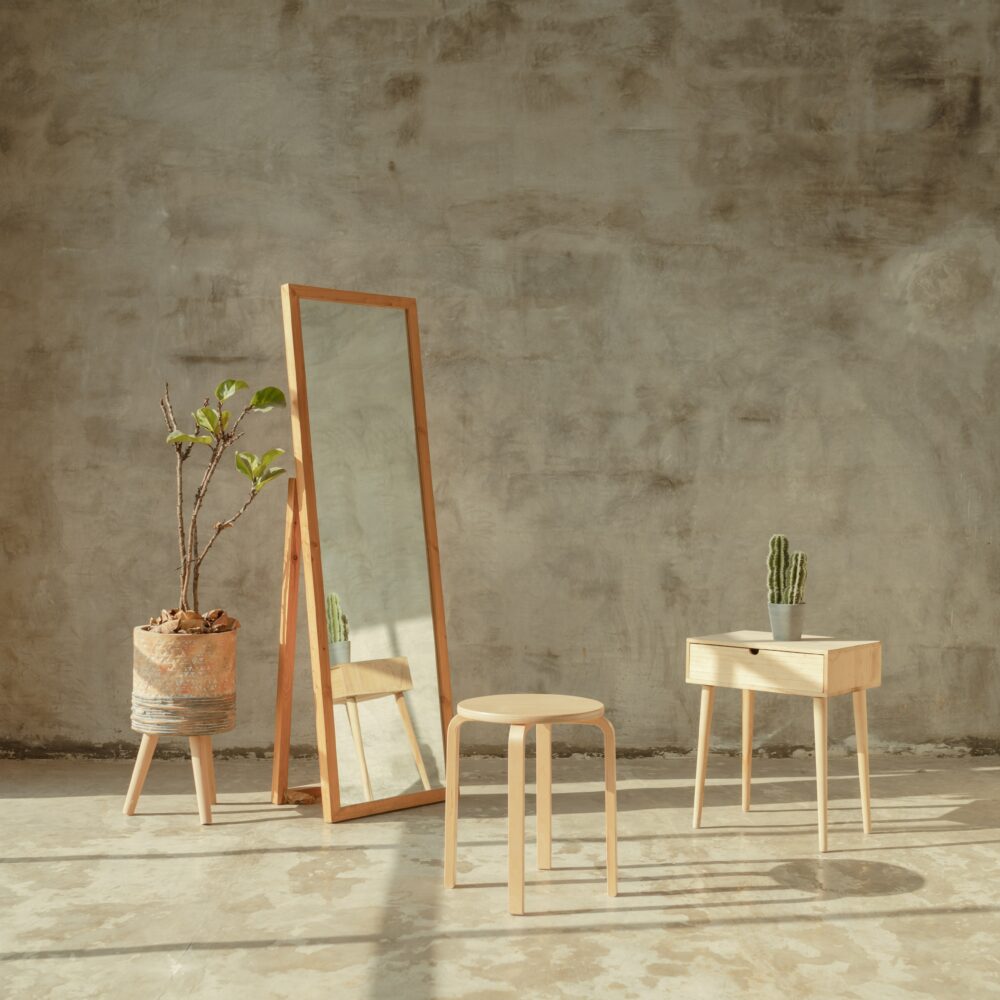
Demark is considered the leader in Scandinavian design. This success can be placed down to talented Danish designers like Arne Jacobsen and Hans Wegner. The term ‘Danish Modern’ is synonymous with Scandinavian design and is used to describe this golden age of design. Hans Wegner has gone on to be considered the single most prolific modern furniture designer. One of Hans’ most successful designs is the CH24 Wishbone Chair designed for Carl Hansen and Sons. The Wishbone Chair perfectly represents Danish Modern design – it combines natural materials, muted tones and definitive clean lines. When Wegner was asked how to summarise Danish design, he explained it is about purification and simplification, ‘cut down to the simplest possible design of four legs, a seat, and a combined back – and armrest’.
What is important to highlight is that all design comes from a place of inspiration. Hans Wegner was inspired to design the Wishbone by seeing Chinese workers sat on ‘Ming chairs’ which share similarities to this Danish modern design. Most notably is the curved back rest and woven seat. Design is not always about creating something completely new – Danish modern looks not to reinvent but to refine.
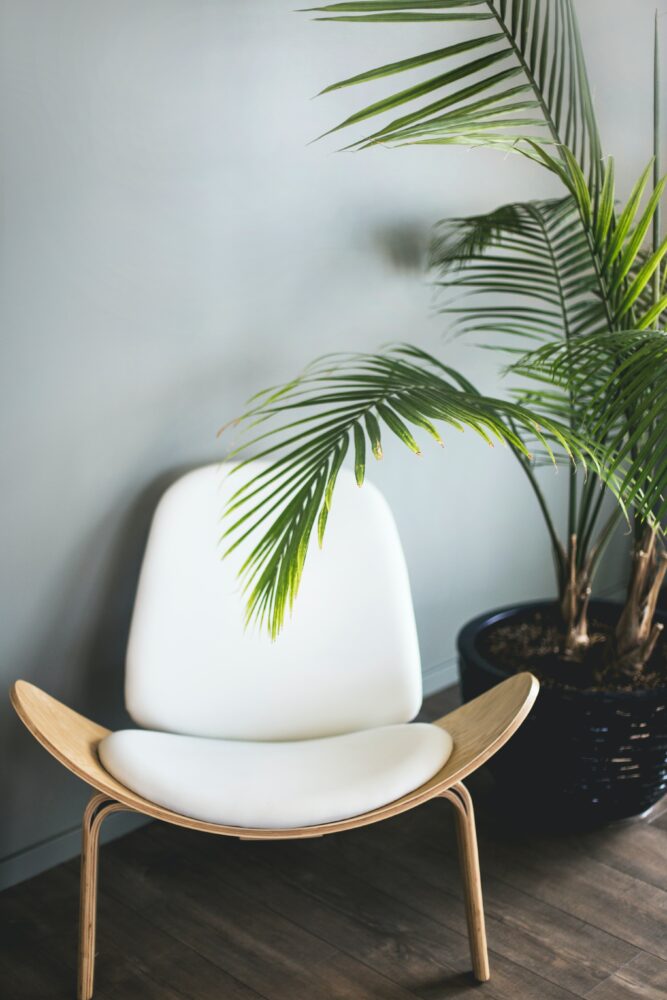
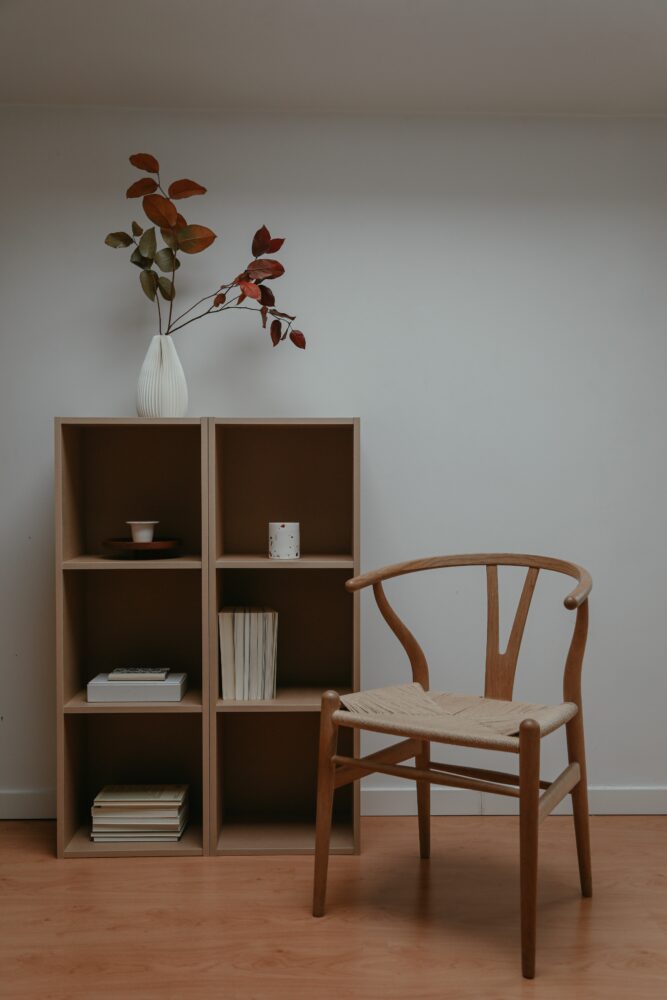
From the 1960s
After the 1960s, colour began to play more of a part in Scandinavian design which is an important factor in today’s designs. There is still a strong aversion to patterns as these go in and out of fashion and therefore can have short lifespans. Instead colour is used either in a monotone or two tone. Painted wood, dyed leather and coloured weave provide the perfect vehicles to present colour in its purest form. The 1960’s also saw the rise in popularity of plastic, giving Scandinavian designers a new material to experiment with. The ‘Panton chair‘ is a perfect example of this. This chair is manufactured using the injection moulding process which allows for free form shapes to be created repeatedly and out of one material. Using plastic also means that your colour choices are almost limitless. The colours that have been introduced to the ‘Scandi’ colour palette are bright; reds, yellows, green and blues.
Why is the Scandinavian design style still so popular today?
In our opinion, the ‘Scandi’ aesthetic is very popular due to its clean, simple lines and calming appearance which helps create an escape from the chaos of the modern world. Often when we think of Scandinavian design, we envisage an environment that is very clean, light and relaxing. The close association between minimalism and Scandinavian design emotes a desire to declutter our lives. With our homes often becoming overwhelmed by things it is only fair that we would desire an aesthetic that is so different from our reality.
Another undeniable impact on the popularity of Scandinavia design is the global expansion of IKEA. Suddenly stylish and affordable furniture was available on demand. It is impossible to escape the impact that IKEA has had. IKEA’s innovation in flat-pack furniture has influenced the whole industry to make a shift.

Alexander Rose’s Deep Dive into Scandinavian design
2023 is an extremely exciting time for us as we are releasing two new Scandi-inspired ranges.
TRAK
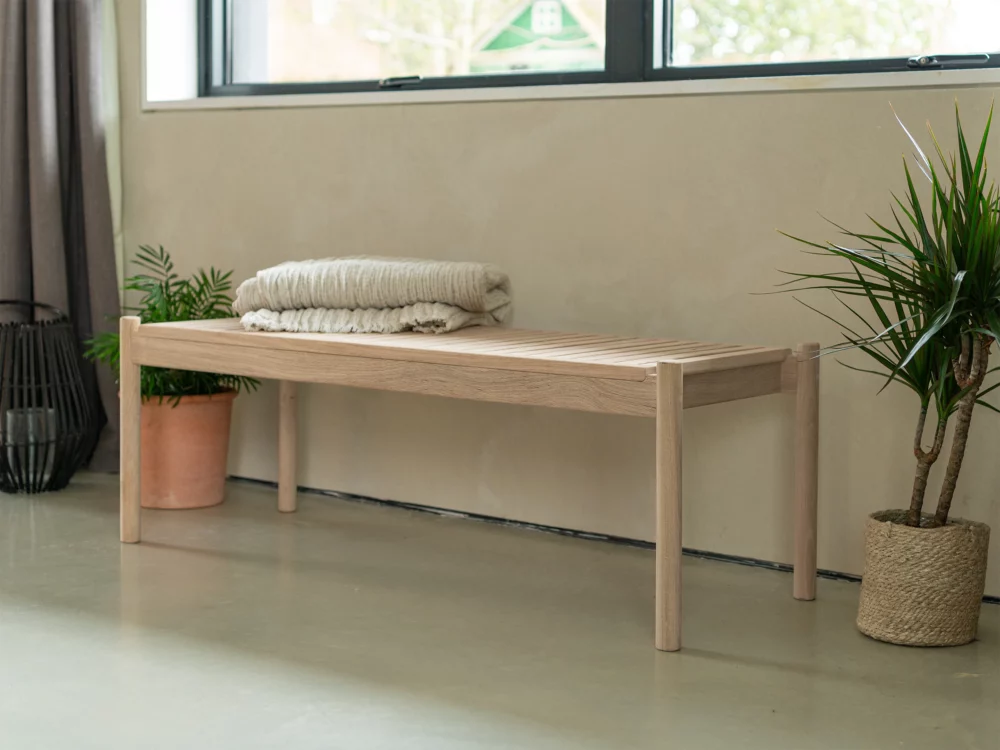
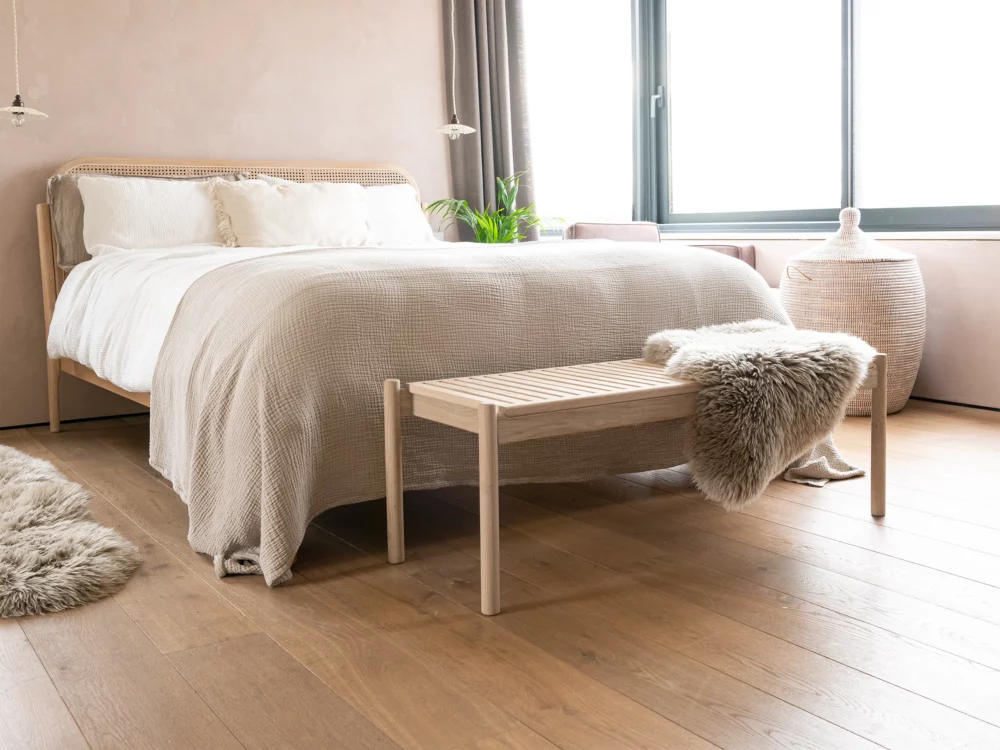
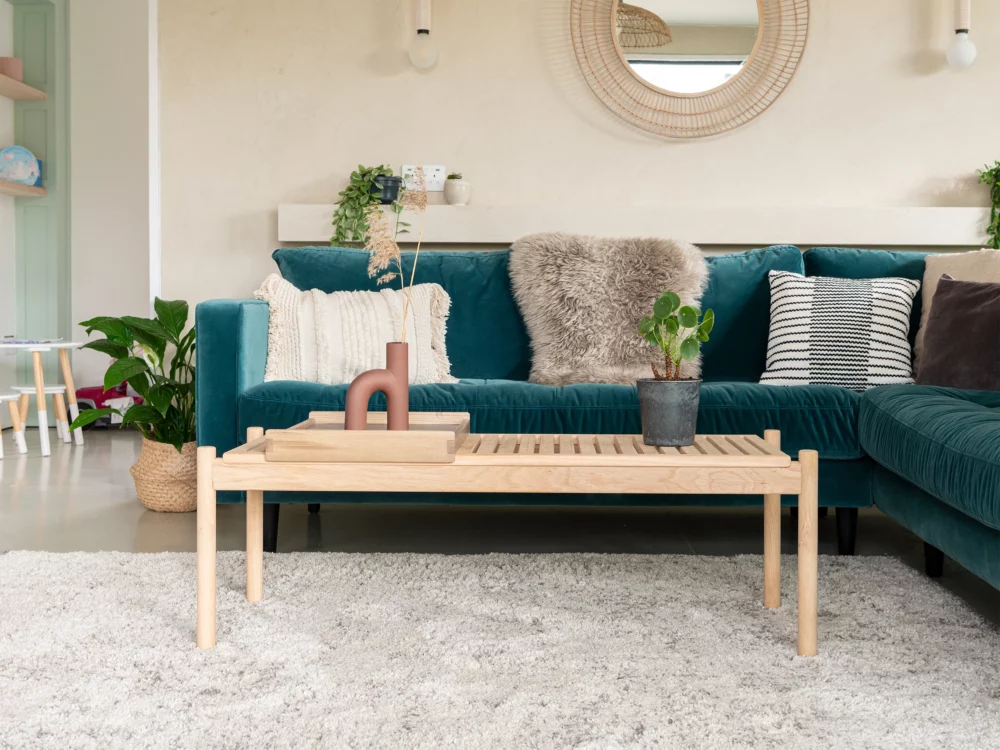
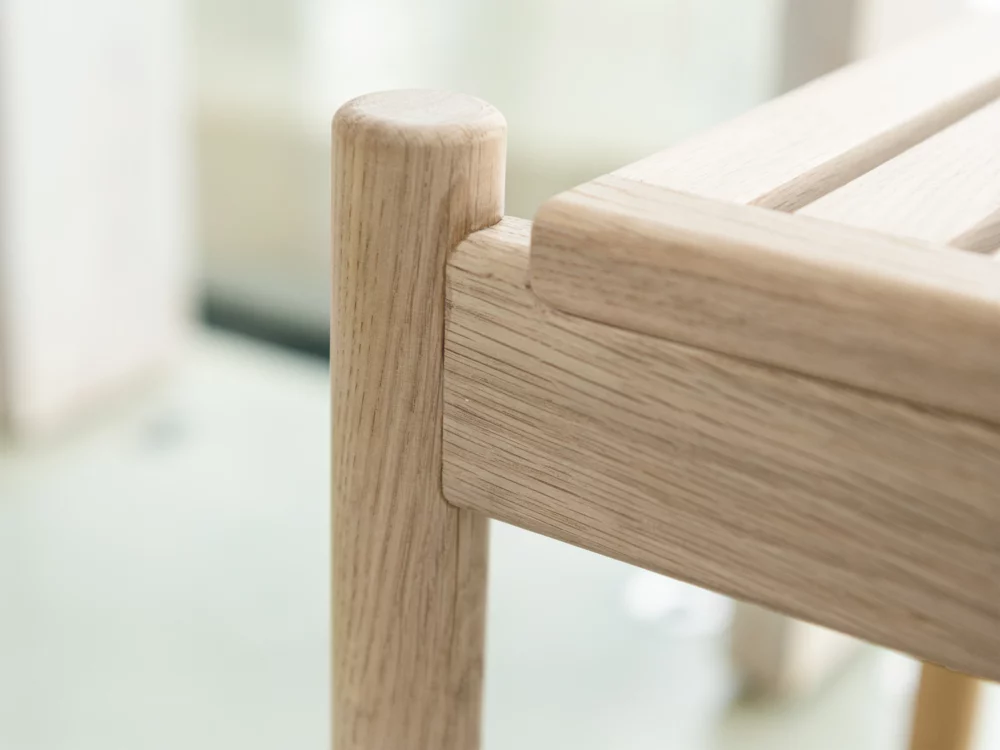
As experts in timber craftmanship, we decided to turn our hand to indoor furniture for 2023. As outdoor furniture specialists, we felt we could apply all we had learnt from our 25+ years of experience and create something very special. The Trak is a European Oak range that gets its name from its slatted design which mimics train tracks. The centerpiece of the range is a backless bench which is designed to inspire creativity. The Bench is very versatile and can be used in a hallway, at the end of the bed or as a coffee table. The whitewashed Oak creates a light natural tone which allows the piece to be used in any room in the house.
With versatility at its very core, the only limitation is your own imagination. We have experimented with using the Trak as a coffee table and at the base of a bed. We are very excited to see how our customers decide to use it in their own spaces. The TRAK’s simplistic design makes it incredibly easy to comprehend, in its simplest form. It was not designed to shock or awe, it has been designed to settle and reassure.
When I spoke with the designer Louis Radtke and asked him what is he most proud of when it comes to Trak, he spoke to me about the ‘s-join’, a feature so subtle the eye would only notice subconsciously. Louis took me to view the bench and pointed me to this feature. He explained that once the top is fitted to the legs a shadow is created between the two pieces. Through great care and detail the designers managed to create the perfect S shape between the components, a clear clean line that the iconic Nordic designers would be proud of.
In addition to the bench, the TRAK also has a tray and a coat rack. Once all three are combined the range really ties together.
DANA
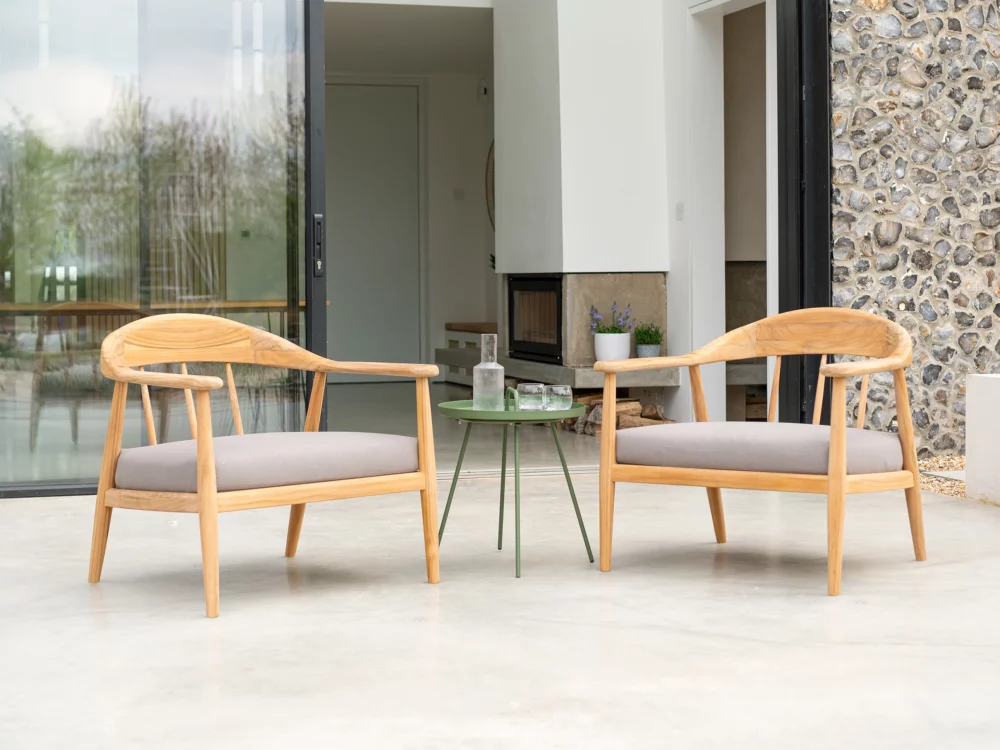
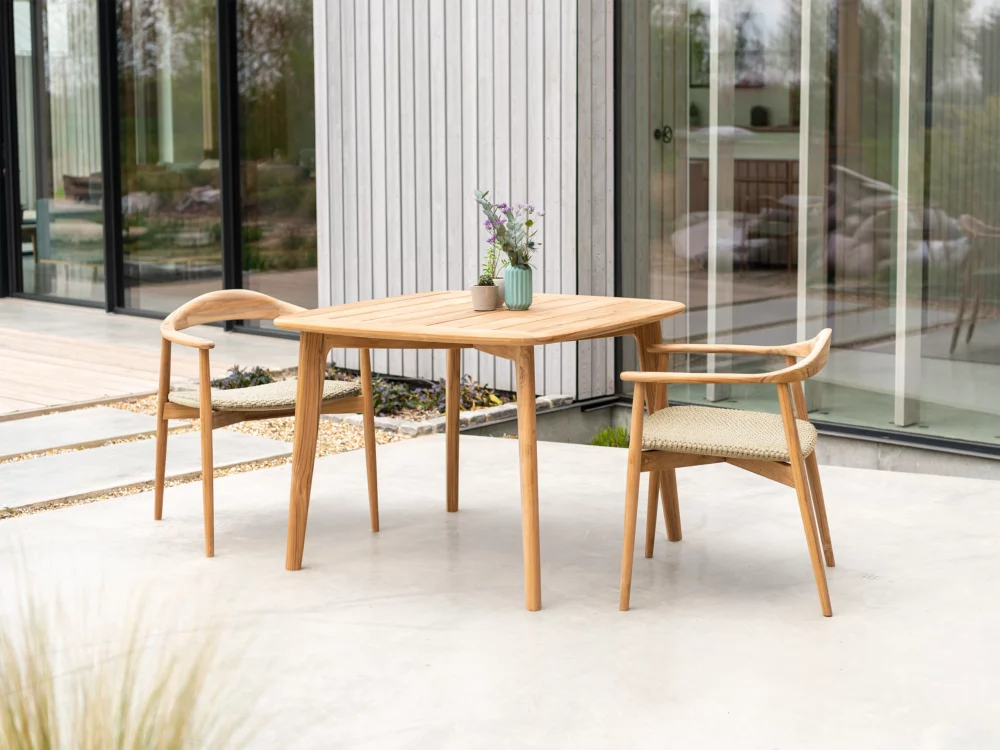
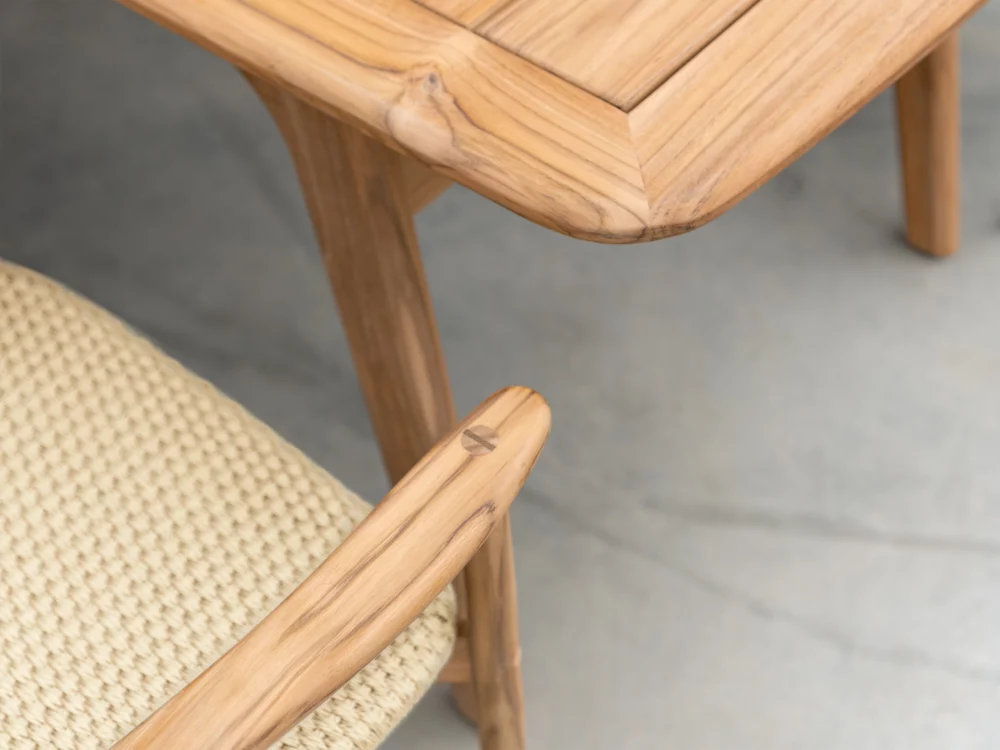
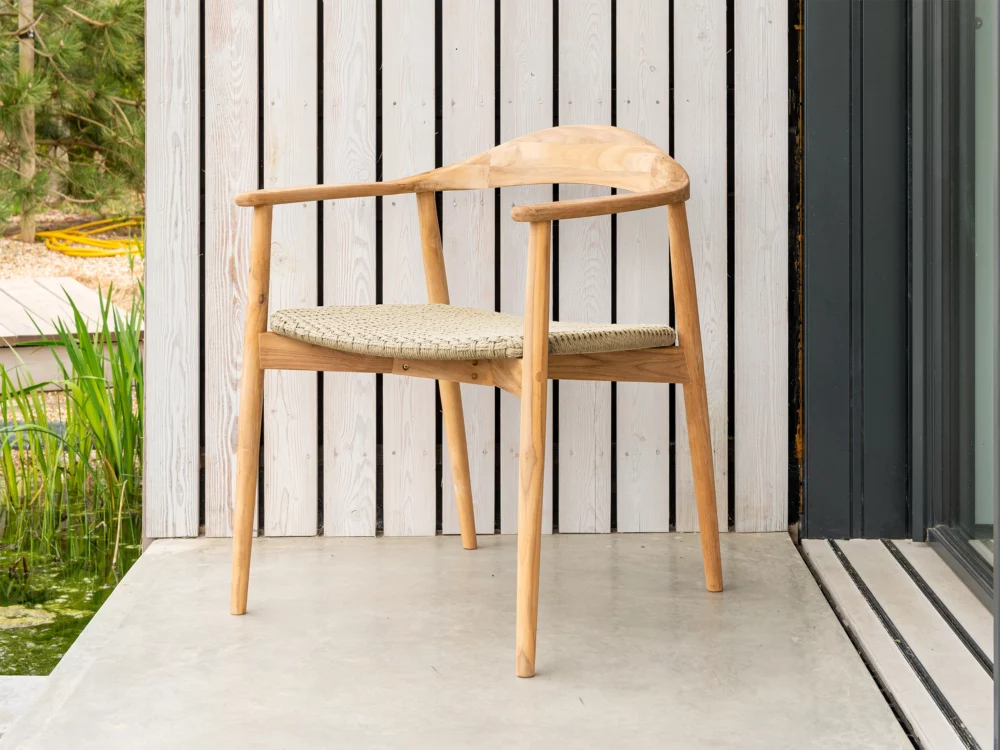
Unapologetically simple, the Dana truly encapsulates everything that Scandinavian design stands for. The natural coloured woven seat pad provides the perfect weather-resistant alternative to the traditional paper cord weave which was popularised in the 1950s. Four legs supporting the arms and backrest, ergonomically shaped to support you as you fall back into the seat.
The chair sits alongside either a square or 2.7m long oblong table, and is complimented by the lounge set, including a sofa, 2 lounge chairs and a coffee table. The core design features of this range include lightness, clean lines and simplistic form. With these at its core, it is clear to see that Dana is a masterpiece of design.
Traditionally, if Dana were designed by Scandinavian designers, it would be made out of Nordic materials such as ash or oak, but as these timbers do not weather well outside, we chose Teak. Teak is one of the most luxurious and sort after timbers in outdoor furniture so makes a perfect fit for the Dana range.
How else has Scandinavia Shaped Alexander Rose?
Our founder Borge Leth (picture on the right) established Alexander Rose over 25 years ago is Danish. He founded the company in 1993, over a meal in Cologne. Two friends with a passion for design detail raised their glasses with excited anticipation. A factory full of crafted quality benches had become available and both Borge Leth and Roy Catchpole were excited at the prospect of starting out on their own in the world of garden furniture. It was in these early days that they gained the financial support of the Pepera family, who remained 100% shareholders until 2010.
